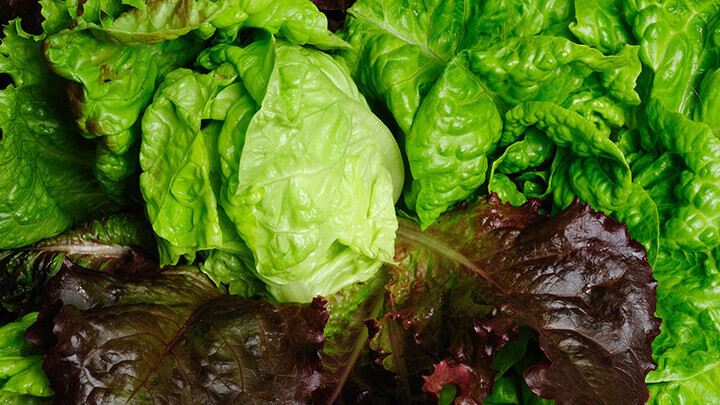You don’t have to worry about how to pick lettuce – it’s one of the simplest vegetables to harvest. Most lettuce can be harvested between 30 to 70 days after planting. When to harvest lettuce depends on the variety and what it will be used for. Really, timing is based on individual preference. Once your lettuce reaches the size you want, it’s ready! Harvesting lettuce in the morning gives you the best flavor.
Knowing how to harvest leaf lettuce is easy. You can either cut the entire bundle off at ground level, or you can remove just a few leaves at a time. Romaine, butterhead and head lettuce are easily cut off near ground level. If you harvest every other lettuce plant, you give the remaining plants room to continue growing.

Growing Different Types of Lettuce
There are four popular types of lettuce grown in the United States: romaine, butterhead, head and loose-leaf lettuce. Although the growing and care process is similar for all types, each lettuce has distinct characteristics in the garden.
Growing Green and Red Leaf Lettuce
Leaf lettuce varieties are the easiest lettuces to grow. Although many people assume red leaf lettuce is grown differently, growing red leaf lettuce is exactly the same as growing green lettuce. You can grow leaf lettuce in rows for nice bundles of loose leaf lettuce, or you can sow it thickly in a garden bed or container for harvest as young, tender lettuce. By harvesting leaf lettuce through trimming it a few inches above the soil, you can get two to three harvests from one planting. Popular cultivars include Red Sails, Tango and Slobolt.
Growing Romaine Lettuce
Romaine, also known as cos, forms tall, tight bundles of thick, sweet lettuce leaves. Reaching up to 20 inches tall, most romaine lettuces take 60 to 80 days to harvest. The extended growing season works because romaine is able to grow without bolting in the warm summers. Growing red romaine lettuce requires the same garden techniques as growing green varieties. Green Towers, Valley Heart and Red Eyes Cos are all interesting romaine cultivars.
Growing Head Lettuce
Crisphead lettuce, or head for short, is the lettuce we know as Iceberg. One of the most popular types of lettuce, salad lovers all over the country often wonder how to grow Iceberg lettuce. Growing Iceberg lettuce requires a bit more care than other varieties. For the best results, plant head lettuce in your fall garden. By avoiding the warm summer weather, you produce sweeter lettuce. In addition to Iceberg, Ithaca, Great Lakes and Crispivo are great head lettuce cultivars.
Growing Butterhead Lettuce
Butterhead lettuce varieties produce tightly folded heads of tender lettuce leaves. The middle leaves are often self-blanching to a delicate white color. Named after the subtle butter flavor, this mild lettuce adds a sweet touch to salads. Try Ermosa, Esmeralda or Nancy in your lettuce garden.
Common Questions About Growing Lettuce
How Long Does It Take Lettuce to Grow?
Lettuce grows fairly quickly. Leaf varieties reach maturity in 30 days but can be harvested as soon as they reach the desired size. Other types of lettuce require 6 to 8 weeks to reach full harvest size.
Can you grow lettuce year ’round?
Garden zones with minimum temperatures in the 60s can grow lettuce all year round. Lettuce seeds germinate in temperatures between 40 to 80 degrees F, depending on the cultivar. Active growth takes place when days are between 60 to 70 degrees. Warmer zones can grow lettuce throughout the winter if you stick to planting lettuce in the fall. Other areas can use modifications, such as cold frames, row covers and greenhouses to extend the growing season.
Can you grow lettuce in hot weather?
Lettuce does not like hot weather. The plant panics and decides that it better produce seeds as quickly as possible. Seed stems develop, and the plant begins diverting nutrients to seed production. This process, known as bolting, produces bitter lettuce.
To reduce lettuce bolting, first look for bolt-resistant lettuce cultivars. Slobolt, for example, can be grown in warmer temperatures. Other gardening tricks to prevent bolting in warm weather include planting lettuce in shady areas, using mulch to cool the ground and conserve moisture, and providing a light mist of overhead irrigation to cool plants.